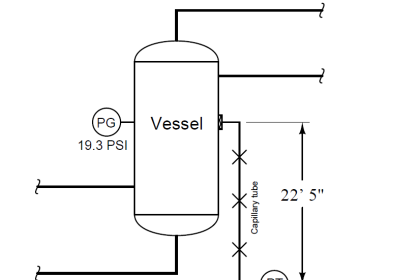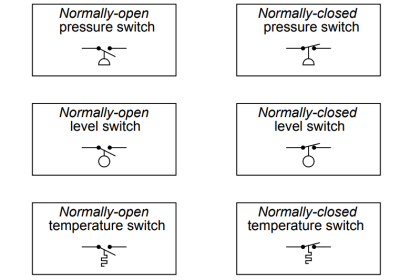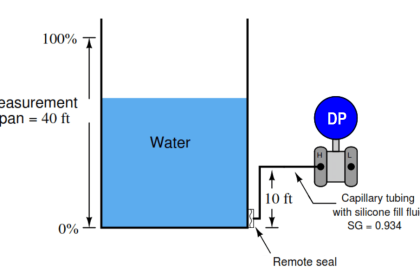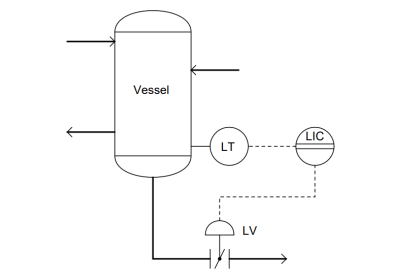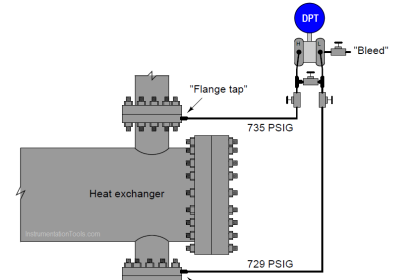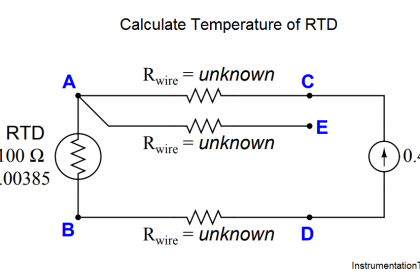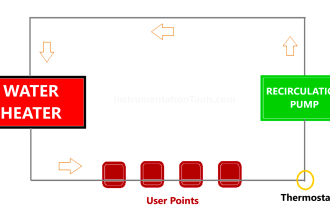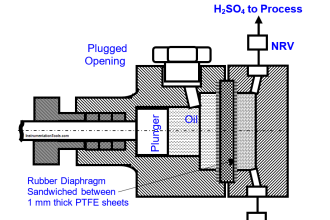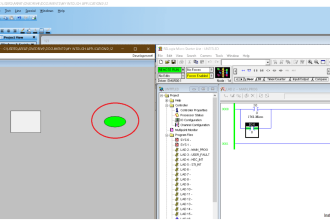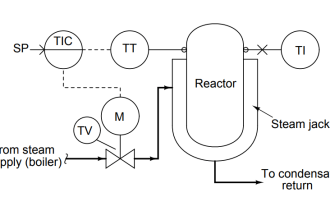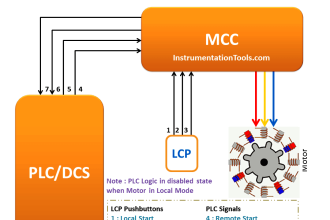Suppose someone builds a dual-junction thermocouple circuit using type T thermocouple wire (copper and constantan metals), then measures voltage between the two junctions with a voltmeter:
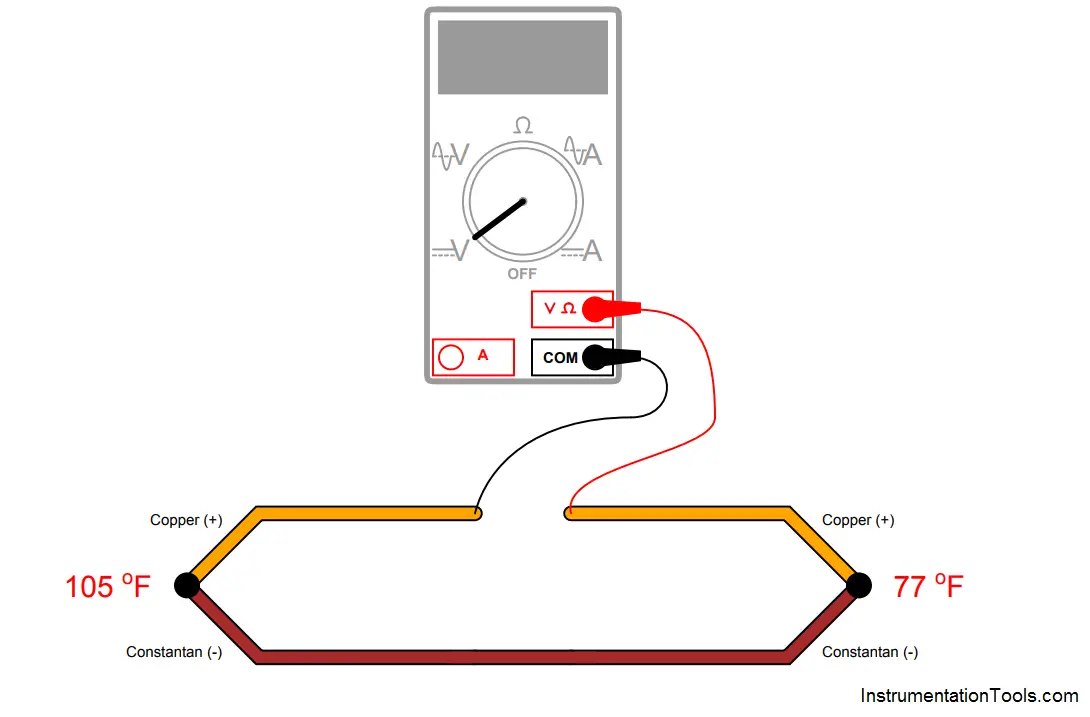
Calculate the voltage read by the voltmeter, using a type T thermocouple table to find millivolt potentials for each of the junctions.
Answer :
The voltmeter should read -0.643 millivolts, because the 105 oF junction has a potential of 1.635 millivolts, the 77 oF junction has a potential of 0.992 millivolts, and the two junctions’ voltages are opposing one another in polarity with the positive terminal of the voltmeter connected to the negative-most copper wire.
